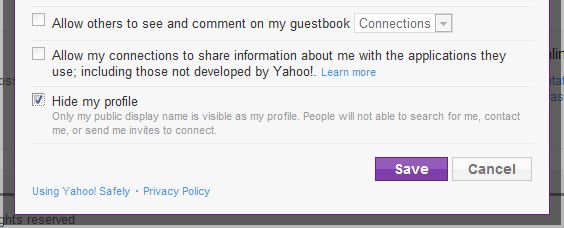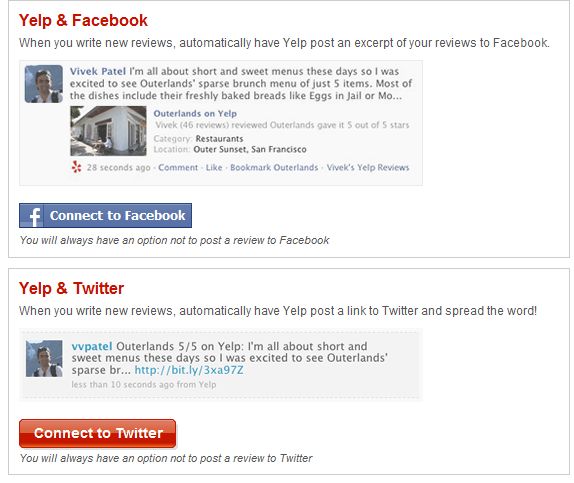Your social connections to you are a click of a button to follow someone/a business/or a product of interest. It’s a less than a second action. We know why we do it.
From an SEO perspective though what does this all mean?
I covered What Your Social Graph Say’s About You in a guest post for Level343 back in February but it raised a question in my head about XFN & FOAF and the connections we develop & how Google is integrating this into our SERP`s, For those that have a Google profile (which the majority of us do in search marketing) you can view your social connections and how you are connected to those you have chosen to follow.
Once I understood where all of my connections came from I set about disconnecting. Why? If I could disconnect & then reconnect these paths it will offer the control desired instead of a “yes, you possibly can” or “no, you can’t” answer. It would also place a little more respect in my opinion back into Google and the control of privacy.
Controlling Your Connections (The Disconnect)
So what are the services Google is sitting up to take notice of, what are the web properties that Google is pulling our data from? Well by logging into your Google account and Managing Your Google Profile you will see “View and manage your accounts from other services”.
You will either be showing NO connections of accounts from other services that you have given permission to connect to your profile.
From that screenshot above we have the first obvious clues to how Google is picking up our data from third party sites, you may not necessarily have had to connect them to your account as Google will be picking up the connections through the settings on these sites. So the next step in my process was simply to adjust the settings on these other profiles and set them to not share my info within those sites;
Links are generated session keys so linking directly to the privacy checkbox is not possible without being served up with a 404 page so for Facebook – (edit your Facebook setting for public sharing) you will see Apps & Websites at the bottom of that privacy settings page, click on through that link and scroll down until you see “Public Search” you will then need to click on “Edit Settings”.
Deselecting “Enable public search” you will now have hidden your name search and disconnected the path should Google be picking this up.
Yahoo
Content discovery through Yahoo that you have shared can easily be turned off (edit your Yahoo setting for public sharing) although Yahoo offers a plethora of privacy settings similar to Facebook the switch off for search is under http://pulse.yahoo.com/y/settings.
Hiding your Yahoo profile will provide that disconnect
Flickr
Although primarily an image sharing site, Flickr still uses XFN & FOAF hooks that Google does pick up along its crawl & indexing (edit your Flickr setting for public sharing). Setting your account to hide from public searches will unhook you.
Your LinkedIn profile settings are a little easier to manage- (edit your LinkedIn setting for public sharing) with the selection of a radio button you can hide your connections behind a protected profile.
Quora
You Quora settings are another easy one to configure and with a self explanatory link within your settings – (edit your Quora setting for public sharing) – Selecting “Search Engine Privacy” and clicking “enable” will “Instruct search engines not to index my name”
Twitter is one of those we are very familiar with but just in case – (edit your Twitter setting for public sharing) – While your next tweet will be protected, third party sites or scrapers will still grab historical tweets but as the sole purpose of this exercise was to remove twitter from my Social Connections this was the only way.
Yelp
Yelp, while no immediate setting to hide your profile from search beyond “Hide my name from member search” which member search results have been excluded via Yelps robots.txt – (edit your Yelp setting for public sharing) – obviously reviews are going to fetch in the review sites members username for every review. While in all honesty I do not use Yelp myself, neither can I locate a privacy setting for something that is quite obviously not meant to be private. Although leaving an anonymous review would be anice option I can’t find it.
So the obvious hook into XFN and FOAF has to be the third party connection to Facebook and Twitter.
All Third Party Connections
If you are familiar with a few of these third party sites you will also have noticed along the way every single one of those without exception has the ability to hook into twitter & Facebook and it is this that Google is looking for along the way. We already know that these are the major players in the social scenes figuratively speaking, but there is a point to all of this and that was to disconnect and see how my Social Connections appeared after the disconnect/reconnect.
So from this;
To this;
This was not all as straightforward as I first thought it was going to be. Even after the Caffeine update, my social connections page took an age to update. But from a blank slate point of view according to Google all of the disconnects are easily reversed. Or you could control all connections by keeping them disconnected and controlling your connections through your own web properties through the use of XFN and FOAF in your own markup.
But there is a downside to that method, Google looks to twitter and Facebook for realtime relevancy to aid their own realtime search. While they do not currently enjoy a healthy data sharing partnership with Facebook on the same level as they do with twitter, they are going to look to build out their own Social Media platforms from all of the data points that WE are providing them with. From that angle this is where our Google Profiles come into play.
While we share our links so readily in our profiles, Google and the Social Search API through XFN & FOAF can easily connect the dots and serve up content from our current connections. It does not take a huge leap of faith to see from recently updated new and shiny Google profile page that there is plenty of space in the 3 column layout for the usual suspects of advertising space and/or “friends & followers”. Where will they get these friends and followers from? In my opinion they already have them, we gave them to Google so willingly just by sharing these connections.
The upside to all of this is that we now know that we can control these connections through the 3rd party sites themselves, but if Google can’t buy into Facebooks data with mega millions then it is logical that they will try to create one of their own. Social Search has taken huge leaps forward in the past year and the introduction of +1’s into experimental search and social circle going mainstream offering up content within our SERP`s from our perceived connections (direct & secondary) how much of a step will it be to integrate our social connections into our Google Profiles?
One last thought though. Without a Google profile to connect the data, where does that leave Google?
Well with all profiles being forced to be public (Google will delete private profiles on July 31st) anyone not making good use of this opportunity to draw a little relevancy from social search, social connections is missing an SEO tactic that is obviously playing out as the way forward for Google. The other third party sites that you are given the ability to connect to within your profile have obvious importance in Googles vision for this way forward, so connecting the paths back and forth across all of those makes perfect sense to.
|


















